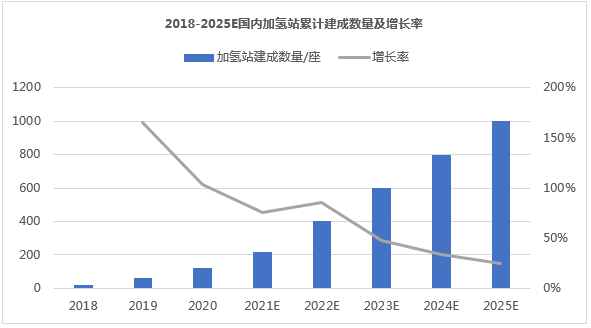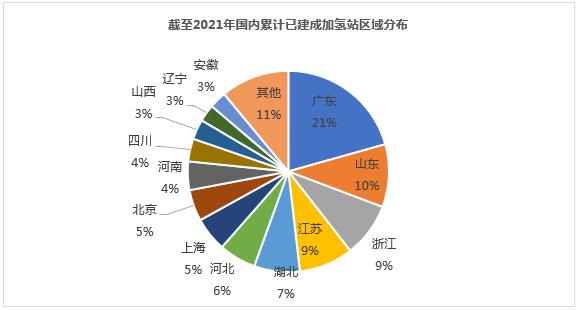

Homepage > CMRC understandings > 【CMRC understanding】Focus on medium and long-term infrastructure construction.
Hits:2011 Createtime:2022-04-26 11:34:35
On March 23, the national development and Reform Commission and the National Energy Administration jointly issued the medium and long term plan for the development of hydrogen energy industry (2021-2035). The plan puts forward the objectives of various stages of the development of hydrogen energy industry: by 2025, basically master the core technology and manufacturing process, and deploy and build a number of hydrogen refueling stations; At the same time, the State supports the layout of hydrogen production facilities according to local conditions, supports the reconstruction and expansion of hydrogen stations by using the conventional facilities of existing gas filling stations in accordance with laws and regulations, and explores the mode of hydrogen stations integrating hydrogen production, storage and hydrogenation in stations.

China's hydrogen energy is in the early stage of development and also in the rising period of the industry. Various favorable policies and local subsidies have stimulated the accelerated expansion of the industry. In the upstream and downstream industrial chain, as an infrastructure and terminal equipment, the hydrogenation station plays an important role in supporting industrial development. In 2006, China built the first hydrogenation station. By the end of 2021, China had built 218 hydrogenation stations, mainly distributed in provinces and cities along the southeast coast. According to the local hydrogen energy industry planning, it is expected that more than 1000 hydrogenation stations will be built in China in 2025.

The construction of hydrogenation stations is in full swing, but still faces many problems and challenges: first, the industrial innovation ability is not strong. Although China is the largest hydrogen producing country in the world, the existing hydrogenation stations are mainly 35MPa gaseous hydrogenation stations, and the number of 70MPa high-pressure gas hydrogenation stations is small, mainly for demonstration, and have not been put into commercial operation; Secondly, the level of technical equipment is not high, the development level of key equipment such as hydrogenation machine, unloading column and intensive hydrogenation equipment is uneven, and the industry cannot be promoted harmoniously and develop healthily; Finally, the relationship between supply and demand is unbalanced. The construction of hydrogen refueling stations is concentrated in the industrial developed areas along the southeast coast, such as Guangdong, Shandong, Jiangsu and Zhejiang, but the downstream demand is insufficient (hydrogen fuel cell vehicle), which may lead to the situation that hydrogen energy cannot be consumed in full. In addition to the technical problems, systems and regulations have also become the key factors restricting the development of China's hydrogen energy supply system.
At the initial stage of hydrogen energy development, especially from 2021 to 2035, China's hydrogen station market is small, the cost of station construction is high, and it is highly dependent on government subsidies. If only market capital is relied on, the profit margin of commercial operation is almost zero, and the localization of core equipment (compressor, hydrogenation machine, etc.) will be an important means. In this regard, domestic equipment manufacturers, such as Shanghai Shunhua, Shanghai hydrogen Feng and Jiangsu Guofu, are making technological breakthroughs. It can be predicted that it will be the general trend to reduce the construction cost of hydrogenation station and realize commercial operation in the future.